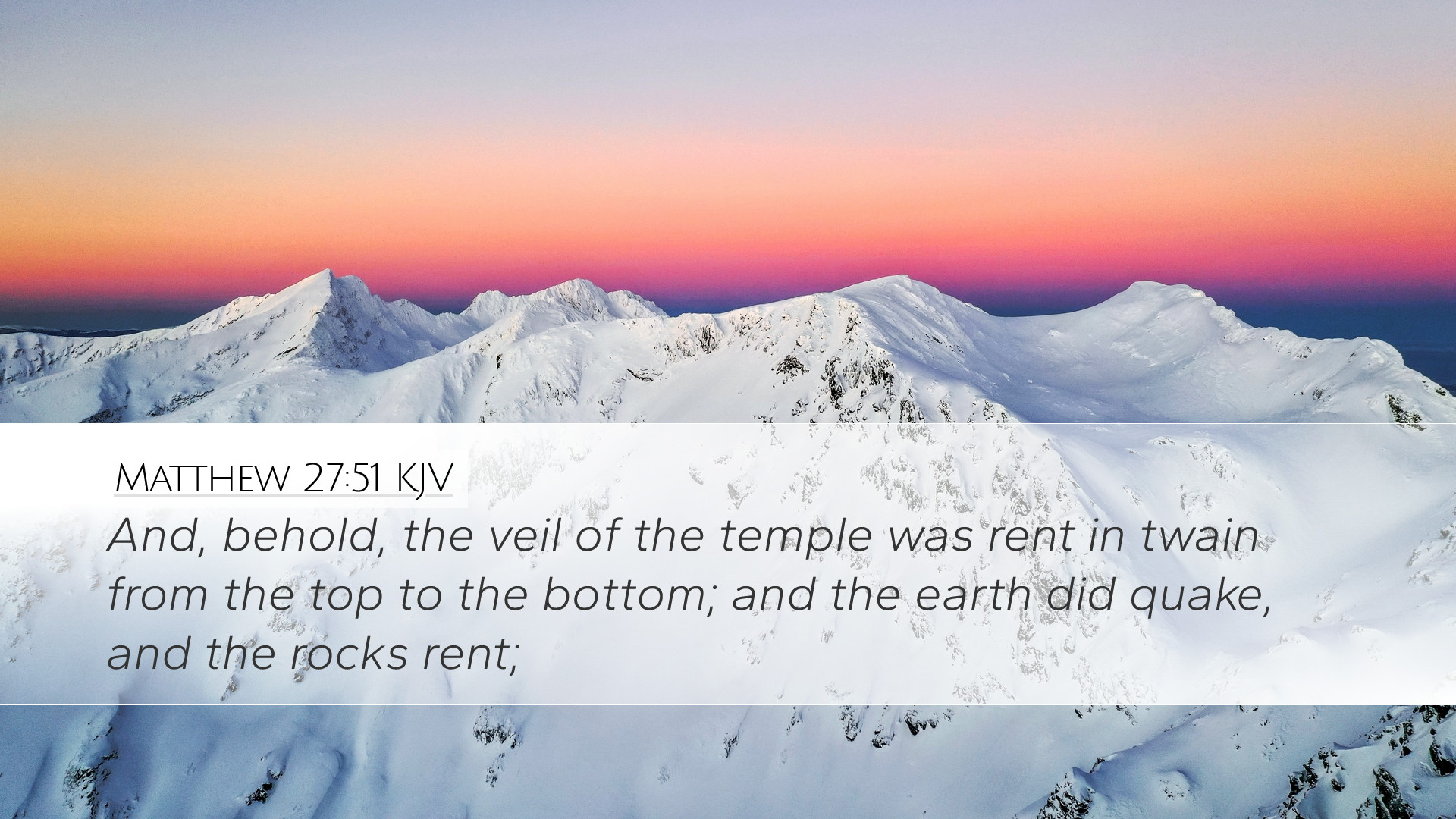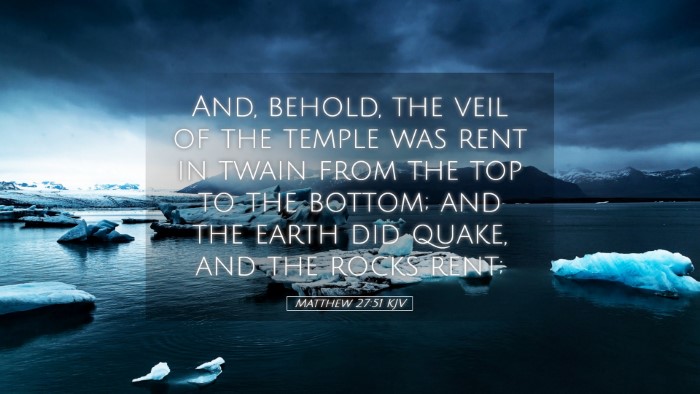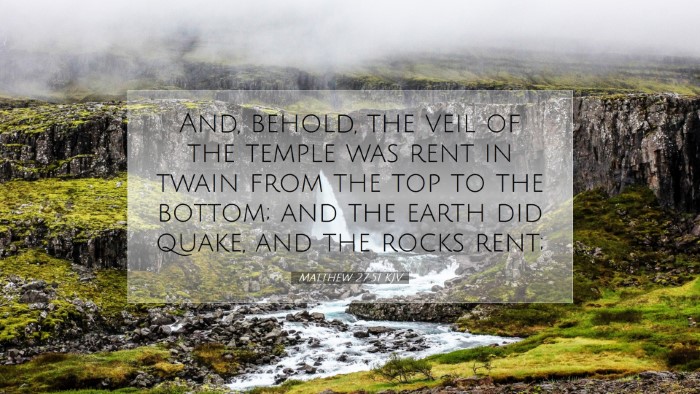Commentary on Matthew 27:51
Verse Context: Matthew 27:51 states, "And behold, the veil of the temple was torn in two from top to bottom; and the earth quaked, and the rocks were split." This significant event occurred at the moment of Jesus’ death, marking a pivotal moment in the narrative of redemption and the relationship between God and humanity.
Historical and Theological Significance
The tearing of the temple veil represents a profound shift in the spiritual landscape of Israel and, by extension, humanity. Traditionally, the veil separated the Holy Place from the Most Holy Place, signifying the divide between a holy God and sinful man. With Jesus’ sacrifice, this barrier was removed, symbolizing direct access to God.
Matthew Henry's Insights
According to Matthew Henry, the veil being torn is emblematic of the end of the Old Covenant and the establishment of the New Covenant through Christ. He emphasizes the theological implications:
- Access to God: Through Christ's death, believers are granted unmediated access to God, a privilege once reserved for the High Priest.
- Fulfillment of Sacrificial System: The temporary system of animal sacrifices is fulfilled and rendered obsolete by the ultimate sacrifice of Jesus.
- Symbol of Judgment: The temple's destruction foreshadowed the judgment that would come upon Jerusalem, as the old order was irrevocably changed.
Albert Barnes' Observations
Albert Barnes offers additional insights, focusing on the physical manifestations accompanying the veil's tearing:
- Earthquake and Rocks Split: He notes that these events underscore the cosmic significance of Jesus’ death, affecting both nature and the spiritual realm.
- Revelation of God's Power: The earthquake serves as a divine confirmation of the gravity of the event, revealing God’s power at the moment of Jesus' sacrifice.
- Implications for Worship: Barnes suggests that with the temple veil torn, the nature of worship radically changed, inviting all to approach God directly.
Adam Clarke's Commentary
Adam Clarke provides a detailed examination of the cultural and ritualistic significance of the temple veil. He remarks on the following points:
- Temple Veil Description: Clarke describes the veil as an ornate and thick curtain, illustrating the impossibility of human access to God's presence without divine intervention.
- Sign of Transformation: The tearing of the veil signifies not just the end of barriers but also the transformation of worship—from ritualistic to relational.
- Prophetic Dimensions: Clarke emphasizes that the event fulfills prophetic imagery within the Hebrew scriptures, pointing toward a messianic hope now realized in Christ.
Theological Implications for Pastors and Scholars
The tearing of the veil has far-reaching implications for preaching, worship, and theological understanding:
- Access to God: This verse stresses the importance of encouraging congregants that through Christ, they can approach God without fear or ceremonial barriers.
- Understanding the Cross: The event requires pastors to teach on the significance of the atonement, illustrating how Christ fulfills the law and the prophets.
- Encouragement for Bold Faith: The immediate access to the Holy of Holies invites believers to prayerfully engage with God, fostering a deeper relationship.
Conclusion
The significance of Matthew 27:51 extends beyond the narrative of Jesus' passion. It encapsulates the heart of the Christian message: that through Christ's death, the way to God has been opened for all. As believers reflect on this verse, they are reminded of the boldness they can have in approaching God's throne, empowered by the sacrifice of Jesus. The insights from Matthew Henry, Albert Barnes, and Adam Clarke collectively draw a rich tapestry of theological depth, inviting deeper understanding and application for today’s Church.


